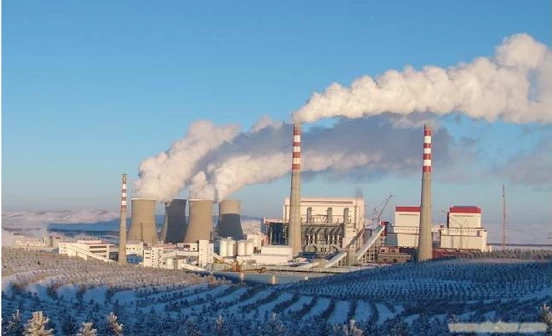Boiler Terminology Explanations (Part 1)
Boiler Terminology Explanations (Part 1)
1.Fossil-Fired Power Plant / Thermal Power PlantA power facility that generates electricity by utilizing the thermal energy released from burning fossil fuels. It includes all equipment, devices, instruments, and installations related to fuel combustion, thermal-to-electrical energy conversion, and power output. Additionally, it encompasses buildings, structures, and auxiliary facilities for production and living purposes within a designated area.
2.BoilerA mechanical device that uses the heat energy released from fuel combustion or other sources to heat feedwater or another working medium to produce steam, hot water, or other thermal fluids with specified parameters and quality. A boiler used for power generation is called a power station boiler. In power station boilers, the heat energy released by burning fossil fuels (such as coal, oil, and natural gas) is transferred through the heating surface's metal walls to the working medium—water—turning it into steam with a certain pressure and temperature.At this process pressure seal gate valve will be used for the pipeline. The generated steam drives a steam turbine, converting thermal energy into mechanical energy, which then drives a generator to transform mechanical energy into electricity for users. Boilers, steam turbines, and generators are collectively known as the three major machines of a thermal power plant. Power station boilers are also commonly referred to as steam generators.
3.ThermodynamicsA branch of physics that studies the properties of various forms of energy (especially thermal energy), their transformation laws, and their relationships with material properties. Thermodynamics focuses on the equilibrium states of substances and physical and chemical processes that slightly deviate from equilibrium. Modern thermodynamics has expanded to include the study of non-equilibrium processes. Engineering thermodynamics is based on two fundamental laws of thermodynamics. Since the conversion of thermal energy into mechanical energy is achieved through changes in the state of the working medium and thermal cycles, process and cycle analysis are the main topics in engineering thermodynamics.
4.Working Medium (Working Substance)The medium that facilitates the conversion of thermal energy and mechanical energy. To obtain more work output, a working medium should have good expansion and flow properties, be inexpensive and readily available, have stable thermodynamic properties, and be non-corrosive to equipment. Steam meets these requirements and is used as the working medium in power plants.
5.State ParametersPhysical quantities that characterize the state of a working medium. Examples include temperature (T), pressure (p), specific volume (v), internal energy (u), enthalpy (h), and entropy (s). These six parameters are commonly used, along with others. State parameters differ from general engineering parameters such as flow rate and volume, as they specifically describe the state characteristics of a working medium.
6.PressureThe perpendicular force per unit area, also called stress. Pressure is an intensive quantity, meaning its value is independent of the system's size. It is typically denoted by the symbol P and measured in pascals (Pa). Different forms of pressure include absolute pressure, atmospheric pressure, gauge pressure (engineering term: positive pressure), vacuum pressure (engineering term: negative pressure), and pressure difference.
7.Specific VolumeThe volume occupied by a unit mass of a substance, represented by the symbol V. Specific volume is an intensive quantity, meaning its value is independent of the system's size. The unit is cubic meters per kilogram (m³/kg). Another commonly used physical quantity in thermodynamics is density (ρ), which is the reciprocal of specific volume and represents the mass per unit volume of a substance.
8.TemperatureA measure of the hotness or coldness of a substance. According to the zeroth law of thermodynamics, temperature indicates whether a thermal system is in equilibrium with another. All systems with the same temperature are in thermal equilibrium; otherwise, they are in a non-equilibrium state. Temperature is an intensive quantity, meaning its value is independent of the system's size. Temperature scales, or thermometric scales, are used to express temperature. China's legal temperature scale follows the International System of Units (SI) and uses the thermodynamic temperature scale, also known as the Kelvin scale (absolute temperature scale), denoted by the symbol T and measured in kelvins (K). Other historically used scales include the Celsius scale (°C) and the Fahrenheit scale (°F).
9.Internal EnergyThe energy stored within a thermal system. Internal energy is an extensive quantity, meaning its value is proportional to mass. It is represented by the symbol U and measured in joules (J). The internal energy per unit mass is called specific internal energy, denoted by u and measured in joules per kilogram (J/kg). From a microscopic perspective, internal energy includes the kinetic energy, potential energy, chemical energy, and nuclear energy of the molecules that make up the system. In physical processes that do not involve chemical reactions or nuclear reactions, only molecular kinetic energy and potential energy are considered in the system's internal energy. For an ideal gas, internal energy is independent of pressure and is only a function of temperature.
10.EnthalpyThe sum of a thermal system's internal energy (U) and pressure potential energy (PV). Enthalpy is an extensive quantity, represented by the symbol H and measured in joules (J). The enthalpy per unit mass of a substance is called specific enthalpy, denoted by h and measured in joules per kilogram (J/kg).

 +86 512 68781993
+86 512 68781993 


















